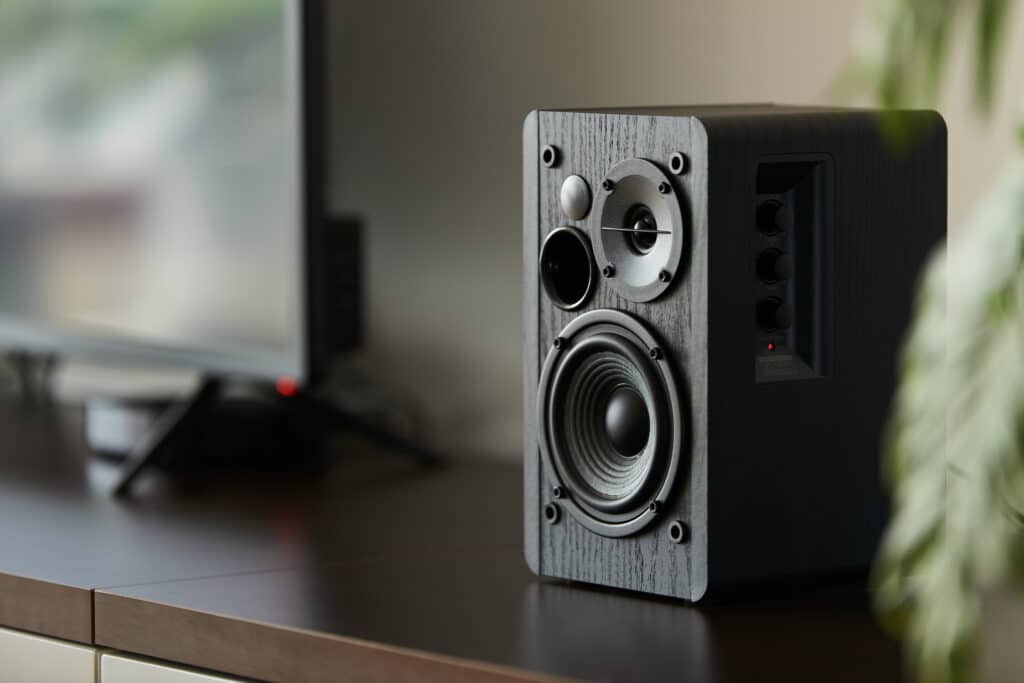What is Hi-Fi audio exactly? You may have heard of this term, but do you know how it works? Hi-Fi is designed to reproduce audio from the finest nuances to the subtleties in movies and music with exceptional clarity. It’s beyond the standard audio system. Think of it as an almost lifelike sensation because of its audio realism. In this article, we will define high fidelity and share the components of a Hi-Fi audio system along with its benefits.
What is High Fidelity?
Hi-Fi audio, short for high fidelity audio, refers to sound reproduction with exceptional accuracy and clarity. Essentially, Hi-Fi audio delivers sound that mirrors the original recording as closely as possible. But what makes Hi-Fi audio so sought after? For audiophiles and music lovers, the goal is to experience music the way the artist and producer intended—every note, nuance, and subtle detail, without any distortion or loss of quality.
Hi-Fi audio isn’t just about playing music louder or with more bass; it’s about precision. It creates a rich, immersive listening experience where you can pick up on elements you might miss with standard audio reproduction systems. Whether it’s the crispness of a guitar riff, the depth of a bass line, or the tiny reverb in a vocal track, Hi-Fi audio brings out the finer points of a recording.
Achieving true Hi-Fi audio, however, isn’t as simple as playing any track through good speakers. It starts with expertly mastered and mixed recordings—music that has been crafted with attention to detail by producers who understand how to preserve the authenticity of the sound. Without this careful production process, the audio can’t truly be considered Hi-Fi.
What is Hi-Fi Audio used for?
Hi-Fi has come a long way in recent years. It has become a go-to term for music listeners who demand the highest-quality music. Audiophiles, in particular, are known for their love of Hi-Fi audio, as they seek to recreate the sound that the artist intended during recording.
On the other hand, home theaters use Hi-Fi audio systems to create the cinematic experience at home, complete with the massive sounds of explosions and crisp dialogue.
Read more: “Home Theater Setup Advice From The Pros”.
Even smart gyms have jumped on the bandwagon, recognizing the benefits of crystal-clear audio in creating the perfect workout environment. “A 2010 study led by sport psychologist C.I. Karageorghis states that music can improve athletic performance in two ways: it can either delay fatigue or increase work capacity.”
Hi-Fi audio is and will continue to be the perfect solution for anyone who demands the best sound quality in their everyday life.
How to Build a Hi-Fi Audio System:
Let’s break down the typical components you’ll need to assemble your home Hi-Fi audio setup.
- A high-quality amplifier – to power your speakers
- Powerful speakers that can handle the power and deliver clear, balanced sound
- A great source – a CD player, turntable, or digital streaming device will all work great in a Hi-Fi system.
- A high-powered subwoofer – add depth to your sound system and listening experience.
- DAC, or Digital-to-Analog Converter – translates digital audio information – ones and zeros – into analog sound waves, allowing us to hear music as intended.
The hardware for Hi-Fi sound is important, but other factors can influence the final sound that you should be aware of.
For example, it’s essential to have a streaming device capable of producing Hi-Fi sound, accompanied by a streaming service offering premium audio content. Often, the basic versions of streaming apps like Amazon Music and Spotify may not have access to the best sound quality.
Also, the layout of your speakers plays a large role in the overall sound quality of your Hi-Fi system. Positioning and angling your speakers correctly can drastically enhance your listening experience by creating an immersive environment and ensuring a balanced stereo image.
Fortunately, AIS offers a dedicated System Design department that excels in creating optimal audio environments. Our team of experienced professionals works closely with you to design your space, considering your area’s acoustics, dimensions, and specific needs. Contact us to request a quote.
DAC: Digital to Analog Converter:
As technology continues to advance, digital signals have become more common. However, many devices still rely on analog signals to function correctly. This is where DAC, or digital-to-analog converter, comes into play. There are three types of DACs–USB, Portal, and Desktop–each with unique advantages and use cases.
- USB DACs are small and easily portable, making them perfect for people on the go. A laptop or desktop computer usually drives them; most modern audio devices are compatible.
- Portal DACs offer enhanced sound quality and are often used by audiophiles. They are larger, have more robust components, and usually require an external power source. See the section below.
- Desktop DACs offer the most flexibility and customization, making them ideal for professional audio production and editing. They use a combination of USB and optical connections to connect to other audio equipment and interfaces and have built-in headphone jacks.
Whether you’re a music lover or a professional sound engineer, knowing how DACs work and which type to choose can make all the difference in your sound quality.
External AMP:
If you’re looking to use a standalone DAC for your audio setup, it’s vital to understand the role of external amplifiers in achieving the best results. These power the speakers and are essential to producing high-quality sound.
External amplifiers come in many shapes and sizes, from tabletop models to rack-mountable units. When choosing an external amplifier, consider the size of your room, the power output you need, and the type of audio equipment you’ll use.
One important thing to remember is that not all amplifiers are made equally.
If you want to take your setup to the next level, it’s worth considering integrating hidden wiring and seeking setup advice from industry experts. By doing so, you’ll be able to optimize your system and ensure you’re getting the most out of your standalone DAC and external amplifier setup. Contact us for help with hidden wiring integration and overall setup advice today!
Acoustic Panels:
For Hi-Fi audio enthusiasts, the sound quality is everything. But even with the best equipment, a room’s acoustics can significantly affect the listening experience. That’s where acoustic panels come in. These panels are designed to absorb and diffuse sound, optimizing the audio quality and providing a truly immersive experience.
At AIS, we understand the importance of pristine sound quality, which is why we offer in-wall acoustic panels for your home or studio. With our professional installation, we can maximize your space and ensure that every note is heard with crystal-clear clarity.
Integrate High-Quality Home Audio Systems with AIS
Now that you know the answer to “What is Hi-Fi audio?”, you understand how these audio systems create an immersive and sonic audio landscape.
At AIS, we offer a full suite of Hi-Fi audio solutions for your home or studio. Whether it’s a 5.1 surround system, multiple zone setups, or hidden wiring integration. We have the selection and expertise to create the best possible systems at any budget.
Are you ready to amplify your home audio system with Hi-Fi audio? Contact us for home audio integration services, or use our budget calculator to plan your expenses.
Hi-Fi Audio FAQs
What is Hi-Fi audio?
Hi-Fi audio, or “high fidelity audio” is a term used to describe sound reproduction with high accuracy and detail. High fidelity refers to audio that sounds as close to the original recording as possible.
What is a Hi-Fi audio system used for?
A Hi-Fi audio system is those who are looking for the highest quality audio you can get. Some common examples are for home theaters, entertainment systems, and those who want high-quality music.
What is a DAC?
A Digital-to-Analog Converter (or DAC for short) is a device that converts digital audio files so that sound devices, such as headphones or speakers, can interpret the data and give you sound.




